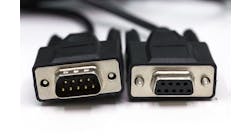Chris Baldwin is vice president of product management for ThingWorx at PTC. He has more than 20 years of experience working in industrial software engineering and is familiar with IoT challenges faced by manufacturers. He advises industrial manufacturers on Industrial IoT (IIoT) technology roadmaps and implementations.
Tell us about your company’s state-of-the-art industrial-networking technology.
Chris Baldwin, vice president of product management for ThingWorx at PTC: ThingWorx is our solutions platform for the Industrial Internet of Things (IIoT). It is comprised of six pillars of solution applications: device connectivity, system connectivity, data modeling, analytics, orchestration and visualization. Our biggest focus for ThingWorx is manufacturing efficiency and service optimization. We are extremely proud of our latest innovation, Digital Performance Management (DPM). Our DPM solution enables manufacturing companies to identify performance losses, while tracking and monitoring the success of their actions with the industry’s first solution for closed-loop operational excellence. With DPM, companies can:
- identify critical bottlenecks to prioritize for improvement
- track the impact of these improvements on operations
- self-monitor and self-measure performance across all sites.
What have been the biggest improvements to industrial-networking technology in the past five years?
Chris Baldwin, vice president of product management for ThingWorx at PTC: For ThingWorx-based applications, I think we have benefited most from more informed payloads given the use of OPC UA or MQTT, where less data has to be mapped and reconstructed when it reaches our data model. This means less work for developers because the data is already contextualized and informed from the sources, but also faster response times and processing because there is less unpacking and repacking of data into different formats. In addition, 5G and time-sensitive networking concepts allow for lower latencies, higher reliability and similar capabilities to be executed in the cloud or at the edge. Overall, we are enjoying a more capable and flexible distributed compute model.
What’s the most innovative or efficient industrial-networking technology application you’ve ever seen or been involved with?
Chris Baldwin, vice president of product management for ThingWorx at PTC: I was particularly impressed with an engagement from one of our top partners and an automotive tire manufacturer. The actual production of the tires on a particular type of machine was routinely achieving only 50% of the expected production, because of splicing failures in the materials. On average, the company was losing almost one tire a minute and 250 per day due to non-operational time losses. The partner was able to use our IIoT platform and our machine learning to eliminate 35% of the non-operational time by predicting bad splices before they happen. They took this a step further by prescribing machine setting adjustments on the fly to maintain production quality and uptime. This was an implementation founded in closed-loop control and yielded 85 more tires produced per machine per day and resulted in $20 million more in incremental profit last year—a huge win for analytics as applied to real manufacturing issues.
How has industrial-networking technology benefitted from remote monitoring and connectivity?
Chris Baldwin, vice president of product management for ThingWorx at PTC: Our top use cases and sales have always been centered around remote monitoring and reliable and flexible connectivity. We have thrived in the service of connected industrial equipment, offering more visibility to equipment health, as well as remote troubleshooting and repairs. With recent pandemic events resulting in many employees working from home, we’ve seen an uptick in remote monitoring usage as physical access to equipment is reduced. It has also forced industrials who are not connected to get connected. As the IIoT solution provider, this also means that we’re investing more in our edge capabilities for more intelligent and more frequent device interactions. We’re establishing higher amounts of sessions, increasing the amount of data and devices we can accommodate and developing more intense levels of security. This allows us to protect these now vital connections with assets.
Can you explain how software development has changed industrial-networking technology design and production?
Chris Baldwin, vice president of product management for ThingWorx at PTC: As software development has been greatly influenced by manufacturing over the past 20 years, both are intricate processes of scaled production which have heavily relied traditionally on people. Now, software development has deep roots in continuous improvement, automation and systems thinking. These same principles that drive applications are manifesting in industrial-networking designs, where infrastructure/configuration as code and software defined networking allow for highly automated deployments and highly dynamic, responsive and reliable service models.
How do industrial-networking technologies figure into digital-twin platform models being used by manufacturers?
Chris Baldwin, vice president of product management for ThingWorx at PTC: Consider the tire manufacturer that had to solve for tire production issues; the environments and variables in manufacturing are so proliferate that these problems can only be solved effectively through machine learning. The digital twin of the process the tire manufacturer used, the materials, the environment, the machines, the orders, the schedule, the skillsets and the labor all needed to be codified. This solution requires a digital twin and an assembly and mastery of data, from the live machines, the systems that interact with them, the supply chain and customer facing systems that feed into the manufacturing process and awareness of the people operating the machines to even the ambient environment and its effect on materials and machines. This assembly of the process and operational twin gave birth to the understanding of where issues were occurring, how to eliminate them and further the continuation of optimizations for a higher yield.
When will industrial-networking technology become IT-friendly enough that engineers are no longer required for installation and operation?
Chris Baldwin, vice president of product management for ThingWorx at PTC: I believe we have already realized this in the consumer space. When you’re installing a new router and Wi-Fi beacon in your house or introducing a new thermostat, appliance or mobile device, you are up and running within a few clicks. I think these vendors realize, for their products and services to succeed, ease of use is paramount. Those vendors also make assumptions that the world is flat and that their products and services are designed to solve most problems, but not all problems. Here, the 80/20 rule applies in that they have encapsulated and designed for a majority of the use cases they encounter and ceded the configuration, testing, customization and hence complexity that addresses the remaining 20% of their market. Industrial networking and the companies that rely on it seem to be more accepting of the complexity of it and the affiliated costs. Some of this likely has to do with the distance in enterprise IT/OT between the buyer and the implementers. If it is your own time or your own money, you are more likely to buy, or not buy, simpler solutions. When there are levels of indirection involved, we are more accepting of longer implementation times, costlier solutions and fewer vendor demands. In most enterprise engagements, given the money involved, there are more expectations that complexity will be handled by the vendor. I’m sure the vendors themselves would cede that cost if enterprises agreed to simplify and homogenize.
What future innovations will impact the use of industrial-networking technology in discrete-manufacturing operations?
Chris Baldwin, vice president of product management for ThingWorx at PTC: Given the lower cost and maturing capabilities of IIoT-enabled applications, edge compute and modern networking, I see a huge consolidation in the stacks. Today’s industrial landscape has many time-honored layers, such as the Purdue Model. We already see many customers augmenting those stacks and short-circuiting the layers to bring OT data to the cloud. In the future, while those same five tiers of the industrial network may still allow for securing and classification of systems’ responsibilities and data transactions, I think the physical layers that separate them will melt away. This will also start advancing as older equipment and controllers lifecycle out of the factory and are replaced with newer models that are built for connectivity and standardization.







